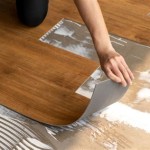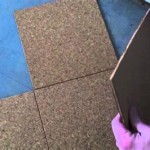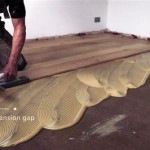How Should You Clean Laminate Flooring
Laminate flooring offers a durable and aesthetically pleasing alternative to hardwood, tile, or carpet. Its resistance to scratches, stains, and fading makes it a popular choice for homeowners. However, maintaining the appearance and longevity of laminate flooring requires proper cleaning techniques. Ignoring the specific needs of laminate can lead to damage, discoloration, and a shortened lifespan. This article provides a comprehensive guide on how to effectively clean laminate flooring, covering essential tools, cleaning solutions, and preventative measures.
Essential Tools and Equipment
The tools required for cleaning laminate flooring are relatively simple and readily available. Having the right equipment ensures efficient cleaning and minimizes the risk of damage. A few key items are necessary for routine cleaning and tackling more stubborn stains.
Microfiber Mop: A microfiber mop is arguably the most important tool for cleaning laminate flooring. Microfiber's absorbent properties effectively lift dirt and grime without leaving excessive moisture behind. Opt for a flat mop design, which allows for even distribution of cleaning solution and easy maneuvering across the floor surface. Avoid sponge mops, as they tend to hold too much water and can lead to water damage in the seams of the laminate.
Soft-Bristled Broom or Vacuum Cleaner: Regular sweeping or vacuuming is crucial for removing loose dirt, dust, and debris. Use a soft-bristled broom to avoid scratching the laminate surface. When vacuuming, ensure the vacuum cleaner is equipped with a hard-floor attachment or a brush roll that can be turned off. Avoid using vacuums with beater bars, as these can damage the flooring over time.
Spray Bottle: A spray bottle is useful for applying cleaning solutions directly to the floor. This allows for controlled application and prevents oversaturation. Choose a bottle that produces a fine mist for optimal results.
Buckets: While not always necessary, a bucket can be helpful for preparing cleaning solutions or rinsing the mop head. Ensure the bucket is clean to avoid introducing dirt back onto the floor.
Soft Cloths or Towels: Soft cloths or towels are essential for wiping up spills and drying the floor after cleaning. Microfiber cloths are ideal due to their absorbency and non-abrasive nature.
Effective Cleaning Solutions
Selecting the appropriate cleaning solution is paramount for maintaining the integrity of laminate flooring. Harsh chemicals and abrasive cleaners can strip the protective coating and lead to discoloration. Understanding the properties of various cleaning agents is crucial for effective and safe cleaning.
Water: For light cleaning and routine maintenance, plain water is often sufficient. Distilled water is preferred, as it is free of minerals that can leave streaks. Use water sparingly, ensuring the mop is damp rather than soaking wet.
Vinegar and Water Solution: A mixture of vinegar and water is a natural and effective cleaning solution for laminate flooring. Vinegar's mild acidity helps to dissolve dirt and grime without damaging the floor. Mix one part white vinegar with ten parts water in a spray bottle. Lightly mist the floor and wipe with a microfiber mop.
Dish Soap and Water Solution: A small amount of mild dish soap can be added to water for a more powerful cleaning solution. Use only a few drops of dish soap per gallon of water to avoid leaving a residue. Ensure the floor is thoroughly rinsed with plain water after cleaning with dish soap.
Commercial Laminate Floor Cleaners: Numerous commercial laminate floor cleaners are specifically formulated for laminate surfaces. These cleaners are typically pH-balanced and designed to protect the flooring's finish. Always follow the manufacturer's instructions when using commercial cleaners. Test the cleaner in an inconspicuous area before applying it to the entire floor.
Avoid: Avoid using harsh chemicals such as bleach, ammonia, or abrasive cleaners on laminate flooring. These substances can damage the protective coating and cause discoloration. Do not use wax-based cleaners, as they can leave a dull film on the floor.
Step-by-Step Cleaning Process
Following a structured cleaning process ensures thorough and effective cleaning of laminate flooring. This process involves preparation, cleaning, and drying, each crucial for achieving optimal results.
Preparation: Before cleaning, remove all loose dirt, dust, and debris from the floor. Sweep or vacuum the entire area, paying attention to corners and edges. Clear any furniture or obstacles from the room to allow for unobstructed cleaning.
Cleaning: Prepare the chosen cleaning solution according to the instructions. If using a spray bottle, lightly mist the floor with the solution. Avoid saturating the floor, as excessive moisture can seep into the seams and cause damage. Using a microfiber mop, wipe the floor in overlapping strokes, working your way across the room. Rinse the mop frequently in clean water to remove dirt and grime. If using a bucket, wring out the mop thoroughly to prevent excess water from dripping onto the floor.
Drying: After cleaning, it is essential to dry the floor thoroughly to prevent water spots and damage. Use a clean, dry microfiber cloth or towel to wipe up any remaining moisture. Alternatively, allow the floor to air dry, ensuring proper ventilation. Open windows or use a fan to speed up the drying process.
Addressing Specific Stains and Spills
While laminate flooring is relatively stain-resistant, certain spills and stains require specific cleaning techniques. Addressing these promptly can prevent permanent damage and maintain the floor's appearance.
Liquid Spills: Immediately wipe up any liquid spills with a clean, absorbent cloth. Avoid rubbing the spill, as this can spread it further. For sticky spills, such as juice or syrup, use a damp cloth to remove the residue. Follow up with a dry cloth to ensure the area is completely dry.
Grease and Oil Stains: For grease and oil stains, sprinkle a small amount of baking soda or cornstarch on the affected area. Allow the powder to sit for several minutes to absorb the grease. Vacuum or sweep up the powder and wipe the area with a damp cloth. Follow up with a dry cloth to remove any remaining residue.
Ink Stains: For ink stains, try using a small amount of rubbing alcohol on a cotton ball. Gently blot the stain, working from the outside in. Avoid rubbing vigorously, as this can spread the ink. Wipe the area with a damp cloth and dry thoroughly.
Heel Marks: Heel marks can often be removed with a pencil eraser. Gently rub the eraser over the mark until it disappears. Wipe the area with a damp cloth to remove any eraser residue.
Wax or Gum: To remove wax or gum, harden it with ice. Scrape off the hardened material with a plastic scraper. Wipe the area with a damp cloth to remove any remaining residue.
Preventative Measures for Long-Term Maintenance
Preventative measures are crucial for maintaining the appearance and longevity of laminate flooring. Implementing these practices helps to minimize the need for frequent cleaning and protects the floor from potential damage.
Use Doormats and Area Rugs: Place doormats at all entrances to trap dirt and debris before they are tracked onto the laminate flooring. Use area rugs in high-traffic areas, such as hallways and living rooms, to protect the floor from wear and tear.
Trim Pet Nails: Regularly trim pet nails to prevent scratches and gouges on the laminate surface. Consider using pet booties or socks to further protect the floor.
Use Furniture Pads: Attach felt pads to the legs of all furniture to prevent scratches and dents when moving furniture. Regularly check and replace worn pads.
Avoid High Heels: Avoid wearing high heels on laminate flooring, as they can cause indentations and scratches. Encourage guests to remove their shoes upon entering the home.
Quickly Address Spills: Promptly clean up any spills to prevent staining and water damage. The longer a spill sits, the more likely it is to penetrate the floor's surface.
Maintain Proper Humidity Levels: Laminate flooring can be sensitive to extreme humidity levels. Maintain a consistent humidity level in the home to prevent warping or buckling. Use a humidifier or dehumidifier as needed.
Avoid Excessive Moisture: Avoid using excessive moisture when cleaning laminate flooring. Always wring out the mop thoroughly and dry the floor after cleaning. Never steam clean laminate flooring, as the high heat and moisture can cause significant damage.
By following these guidelines, individuals can effectively clean and maintain laminate flooring, preserving its appearance and extending its lifespan. Consistent care and preventative measures are key to enjoying the benefits of laminate flooring for years to come.
:strip_icc()/The-Best-Way-to-Clean-Laminate-Floors-to-Protect-Their-Shiny-Finish_sourcefile-92515000195c411994b06e5b23599fb4.jpg?strip=all)
How To Clean Laminate Floors Protect Their Shiny Finish
:max_bytes(150000):strip_icc()/Clean-and-shine-laminate-floors-1901095_color_rev-abc64efd91b04527a0f077f8af9634cb.jpg?strip=all)
How To Clean Laminate Floors The Right Way

How To Clean Laminate Floors The Home Depot

How To Clean Laminate Wood Floors Care Tips
/clean-and-shine-laminate-floors-1901095-01-14120673f7064542b4917f35e9ad460a.jpg?strip=all)
How To Clean Laminate Floors The Right Way

How To Clean Laminate Floors In 8 Easy Steps

How To Clean Laminate Floors

How To Clean Laminate Floors The Home Depot

Deep Cleaning Your Laminate Floors A Step By Guide

Laminate Flooring 11 Do S And Don Ts For Keeping Them Clean Architectural Digest
Related Posts








